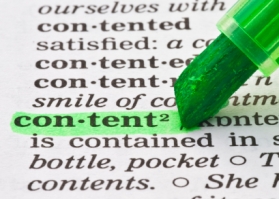This will be my last post until after the new year (we’ll get to New Year’s resolutions in a second). So from all of us to all of you here’s our THP Happy Hodgerdays eCard with tons of stuff about us, what we like during the holidays and some appropriate tunes from our friends at Spotify. Have fun, share the card, be safe during the holidays.
On the flip side you’ll be hearing a lot more from us, a variety of us. We’re putting a blog schedule together. We’ve been gratified by the feedback we’ve received to date as more Hodgers have added their voices to the blog and weighed in on the PR/social topics of the day.
Overall, we’ve been very focused on content. The content we produce for ourselves and our clients and the content our clients pr oduce every day.
oduce every day.
The PR and social world have morphed into one giant communications channel with less lines drawn separating the two.
Our goal for the coming year is to think less about the separate world of PR, social and digital and much more about the content we’re producing and how it can best be spread across this entire communications spectrum.
We’ve had too many conversations recently with people who are “over contenting.” This means they create specific content for each channel and think “ne’er the twain shall meet.” Well friends I’m here to tell you that nowhere in the PR rule book does it say that content specifically written for the media can’t also end up on your website. Or that great picture that you just posted to Facebook, no you shouldn’t post it on your Pinterest board.
Too many people still don’t understand that content is meant to be shared across all channels since NO ONE IS CONSUMING EVERY CHANNEL YOU ARE CREATING.
(Sorry for yelling)
You are making too much work for yourselves and more times than not you are diluting your brand and message instead of doing what you should be doing and keeping the message and imagery as tight and consistent as possible.
We are the content creators, it is our job to extract that content from the source, make it clear and consistent, and then pitch, post, produce, etc. Once you do that, don’t recreate the wheel, just tailor that content to the platform and the audience.
Isn’t that what PR people are supposed to do?
Comment please and Happy Holidays.








